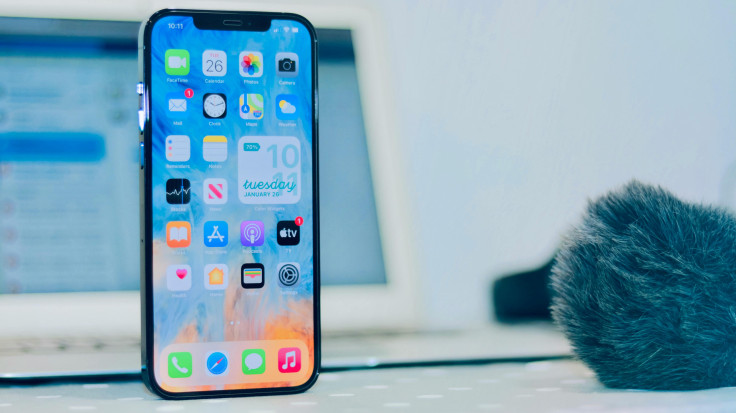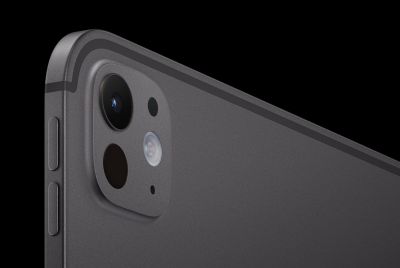Leaks Suggest the iPhone 17e Will Blur the Line Between Mid-Range and Premium
It is rumoured to include a 6.1-inch display and be powered by the A19 chip

Excitement is building in the tech world. Recent leaks about the upcoming iPhone 17e indicate that Apple may be planning a significant shift, one that could fundamentally change the premium and mid-range smartphone landscape.
The 17e appears poised to offer high-end features at a more accessible price point, potentially erasing the traditional division between budget-conscious and flagship devices.
What the iPhone 17e Means for Apple's Lineup
Speculation suggests that Apple's more affordable iPhone range could see an update early in 2026, with reports indicating the development of the iPhone 17e. Apple discontinued the iPhone SE range in February 2025, opting instead for a completely new device, the iPhone 16e. This new model was, at its launch, promoted as 'the most affordable member of the iPhone 16 family'.
This name change suggests that Apple's more accessible smartphone will likely receive annual hardware improvements, mirroring the usual and Pro iPhone models. Reports about a follow-up device reinforce this belief.
Only a few specific details about the future iPhone 17e have been shared by tipsters and industry observers, with some reports directly contradicting each other.
Mark Your Calendars: The iPhone 17e Launch Date Speculation
Several sources indicate that the iPhone 17e will be released during the first half of 2026. However, those providing information disagree on the precise calendar month for its arrival.
Following the iPhone 16e launch in February 2025, two independent reports suggested that the succeeding iPhone 17e would be released a year later, in February 2026.
That alleged release timeframe originated from a publication with a patchy history of accuracy. Furthermore, this outlet is known for poor source attribution, often presenting statistics that lack sufficient supporting detail to be verified or confirmed.
The other individual who proposed a February 2026 arrival for the iPhone 17e, in contrast, has a stronger record for reliable information. That same tipster, though, retracted their statement in April 2025, instead suggesting a tentative launch date of May 2026.
By July 2025, a separate industry report had surfaced, claiming the iPhone 17e debut would happen in Spring 2026. This prediction offered no additional specifics but remains more focused than the timelines offered by others reporting on the device.
In May 2025, industry analyst Ming-Chi Kuo predicted that the iPhone 17e would launch sometime within the first half of 2026. Separately, a tipster known for their reliable history asserted that the handset would arrive early that same year.
In summary, the suggested launch window is widely inconsistent, stretching from February through to May 2026. Nevertheless, there is universal agreement that the iPhone 17e will be revealed sometime during the initial six months of 2026.
That statement aligns well with Apple's historical pattern for its budget-oriented smartphones, which now includes the new "e" line.
Here's a breakdown of the launch dates to support that conclusion:
- iPhone SE (1st Gen): 31 March 2016
- iPhone SE (2nd Gen): 24 April 2020
- iPhone SE (3rd Gen): 18 March 2022
- iPhone 16e (Successor to SE): 19 February 2025 (Announcement) / 28 February 2025 (Release)
All of these budget-focused releases fall within the February to April window.
Based on this, and the fact that the iPhone 16e launched in February 2025, a February 2026 launch for the iPhone 17e seems to be the most logical continuation of this new annual release cadence for the "e" model. However, rumours also suggest a possibility of a slightly later spring launch, such as April or May 2026.
Screen Details: 6.1 Inches, Dynamic Island Potential
Many reports indicate the iPhone 17e will incorporate a 6.1-inch screen, which means it will be slightly smaller than the 6.3-inch display on the standard iPhone 17. This model is also expected to retain the standard 60Hz refresh rate.
However, rumours conflict over the display's actual design. For instance, in July 2025, one report claimed the iPhone 17e would reuse the existing display panel from the iPhone 16e. The report also named the display suppliers — Samsung Display, LG Display, and BOE — and claimed that BOE was expected to provide the majority of the iPhone 17e's screens.
If this proves true, the iPhone 17e would feature a display identical to the iPhone 14's, complete with the notch housing the Face ID sensor and front-facing camera. However, this display claim is widely disputed.
📱iPhone 17e rumors:
— AppleDrop (@TheAppleDrop) October 2, 2025
🗓️Expected release date: iPhone 17e expected in the first half of 2026 (according to Ming-Chi Kuo and Mark Gurman)
🖥️Display: Super Retina XDR OLED panel as the iPhone 16e (from the iPhone 14), brightness up to 1200 nits HDR
⚡️Processor: A19 chip, with… pic.twitter.com/OcLPub0vCP
Conversely, in August 2025, a Weibo leaker claimed the iPhone 17e would use a 6.1-inch display similar to the iPhone 16's. While this source has been vaguely accurate, this could simply be a byproduct of the large volume of leaks they share.
If the iPhone 17e utilises an iPhone 16 display, it would gain the Dynamic Island, making it the final iPhone model to abandon the notch. Regardless of the display design, Face ID is expected to remain the primary method of biometric authentication.
Replacing the traditional notch, the Dynamic Island is used to display crucial information, including media playback controls and countdown timers. It works by utilising the pixels surrounding the camera cutout, effectively using software elements to camouflage the hardware opening.
Potential Design: Dynamic Island vs. The Notch
In terms of appearance, the iPhone 17e is expected to adopt the design of either the notched, flat-sided iPhone 16e or the base model iPhone 16, according to a report by Apple Insider.
Before the iPhone 16e launched, speculation emerged that it would feature the rounded edges of the iPhone 16 chassis. Consequently, should Apple select the iPhone 16's display for the 17e, it remains plausible that the company might also reuse the corresponding chassis design; however, no recent reports have confirmed this specific design change.
A19 GPU: The Four- or Five-Core Question
Regarding the processor, the iPhone 17e is rumoured to feature Apple's A19 chip. Although this claim comes from a reputable source, it is a logical and safe prediction given Apple's typical hardware strategy.
For example, the iPhone 16e was equipped with the standard A18 chip, which included six CPU cores but only four GPU cores. This meant its graphics performance was one GPU core less than the A18 chip utilised in the standard iPhone 16 and iPhone 16 Plus models.
Apple will probably take a similar strategy with the iPhone 17e's A19 system-on-chip. However, the final number of GPU cores (four or five) remains unknown, and this decision will influence the overall performance of the device.
Why the A19 Chip is a Bigger Deal Than You Think
In terms of graphics performance, the iPhone 17 achieved a Geekbench 6 Metal score of 37,014 points, representing a significant leap over the iPhone 16e's score of 22,478 points.
While the addition of a single GPU core would have minimal impact on casual usage, it is expected to noticeably improve the experience of playing demanding, graphics-intensive games.
Compared to the iPhone 16's A18 chip, the A19 features Neural Accelerators designed to enhance on-device AI processing, as well as increased memory bandwidth. Both the A19 and A18 chips come equipped with 8GB of RAM, a lower capacity than the 12GB included with the high-end A19 Pro system-on-chip.
Looks like, Apple’s new A19 CPU cores bring in heavy AI acceleration.
— Rohan Paul (@rohanpaul_ai) October 6, 2025
So the next-gen iPhones shoulld run AI inference tasks dramatically faster. pic.twitter.com/JbXyaVRAbm
The A19 chip in the iPhone 17 utilises a 6-core CPU architecture, comprising two performance cores and four efficiency cores. Apple advertises the CPU as being 1.5 times faster than the A15 Bionic found in the iPhone 13.
The iPhone 16e's A18 chip, conversely, features six CPU cores and four GPU cores, which Apple asserted was 0.5 times faster than the A15 Bionic's CPU. For the iPhone 17e, it is anticipated that its CPU performance will closely mirror that of the standard iPhone 17.
For reference, the iPhone 17's CPU achieved a multi-core score of 9,360 and a single-core score of 3,680 in Geekbench 6. The CPU of the iPhone 16e, by comparison, registered a Geekbench 6 score of 7,976 for multi-core performance and 3,217 for single-core performance.
Specs Solidify, Design Remains Split
A wealth of speculation is now supplementing the initial rumours about the iPhone 17e. Beyond the expected early 2026 release date, 6.1-inch display, and A19 chip, reports are converging on specifications such as a single 48MP rear camera, a 12MP front camera, and 8GB of RAM.
The main point of contention remains the design, with sources still split on whether the device will feature the Dynamic Island or the traditional notch.
© Copyright IBTimes 2025. All rights reserved.




















